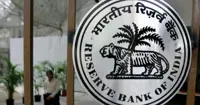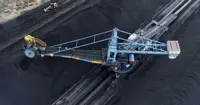China to consolidate nonferrous metals industry
13 May 2009
China's ruling State Council has adopted a plan to set up about three to five mega-metals corporations by 2011, and to deliver overwhelming market power to the country's top 10 producers of copper, aluminium, nickel, lead and zinc.
As per the plan to revitalise the nonferrous metals industry, China will not approve new aluminum plants or expansion projects for the next three years, reported the Shanghai Daily on Monday.
With this, the top 10 domestic players will control 90 per cent of copper production, 70 per cent of aluminium, 60 per cent of lead and 60 per cent of zinc in their respective markets, the State Council, China's Cabinet, said.
A draft of the nonferrous sector rejuvenation plan was unveiled in February.
China is encouraging consolidation, technology innovation and elimination of inefficient capacity to ensure sustainable growth in the nonferrous sector, which directly employs three million people and was hit hard by the economic slowdown and slumping commodity prices.
According to the daily, the government is also studying to expand a mechanism for the purchase of these base metals as state reserves to help smelters. It also plans to adjust export tax rebates for metals and push forward a program which allows aluminium smelters to buy electricity directly from power producers to reduce costs.
The decision to halt new aluminium projects may affect Aluminium Corp of China (Chalco)'s plan to expand the capacity of an aluminium plant in Pingguo in Guangxi Zhuang Autonomous Region to 250,000 tonnes a year from 140,000 tonnes now.
China plans to eliminate 800,000 tonnes of aluminium capacity by the end of 2010, the National Development and Reform Commission said last week.
Wen Xianjun, deputy head of China Nonferrous Metals Industry Association, reportedly said last month that China's idle aluminium capacity stood at 10 million tonnes.
The government would also encourage the exploitation of nonferrous metals both at home and abroad, supporting companies to invest in mines overseas - either on their own or with foreign parties.
China's metals processors account for about one-third of global production.
It is estimated there are only about 40 copper smelters across China with average capacity of 80,000 tonnes a year and 97 aluminium smelters with capacity averaging 150,000 tonnes (30 per cent of which is accounted for by Chalco, a subsidiary of Chinalco).
Lead and zinc is probably the most diverse consolidation challenge given there are maybe 200 smelters dotted around the country, with capacity of about 30,000 tonnes a year.
According to analysts, the move by the State Council is seen as a bad time for Chinalco-Rio Tinto deal.
The issue of consolidation will go to the heart of Australian FIRB and Treasury concerns over the underlying motive for China Inc's push into raw materials, they said, adding that the prospect of government-initiated consolidation will fan fears among investors.
Reports already suggest that the deal is "in the critical room."
Australian authorities are likely force some major concessions from the Chinese as the opposition for the deal was growing in Australia.
A decision on the deal is now pending with the Australian Treasurer Wayne Swan.




.webp)


























